Some of the links in this post may be affiliate links.
The Monstera genus has captured the houseplant world by storm. If you are like me, you’ll want to get your hands on as many as you can! In this post, I will go over 15 stunning types of Monstera, complete with pictures and useful tips and resources.
Some are commonly available, while others are extremely rare, which makes it all the more interesting!
Let’s get right into the 15 Monstera varieties that I’ve chosen for this post.
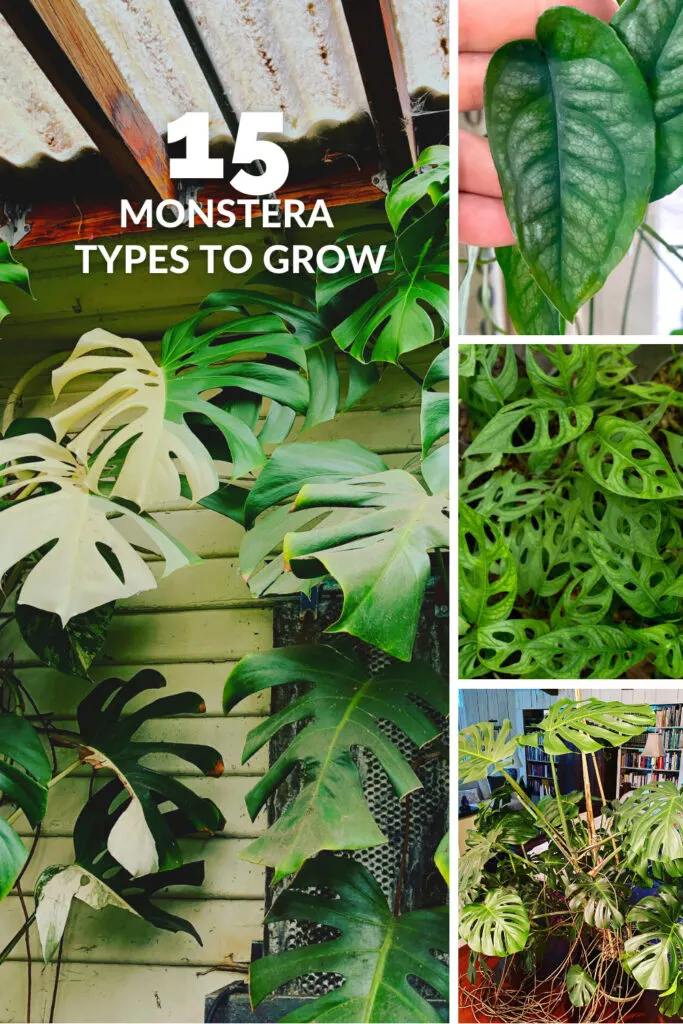
Table of Contents
15 AMAZING MONSTERA TYPES TO GROW
1. Monstera deliciosa
Native to parts of Mexico and much of Central America, this plant has become wildly popular, and for good reason! It is very easy to grow and quite tough!
Even if you are a beginning houseplant enthusiast, this is a great choice, if you have the room that is!
Be sure not to miss my Monstera deliciosa care post for further details on care.
If you have a younger plant, know that it will take some time and age for the fenestrations to occur in the foliage.
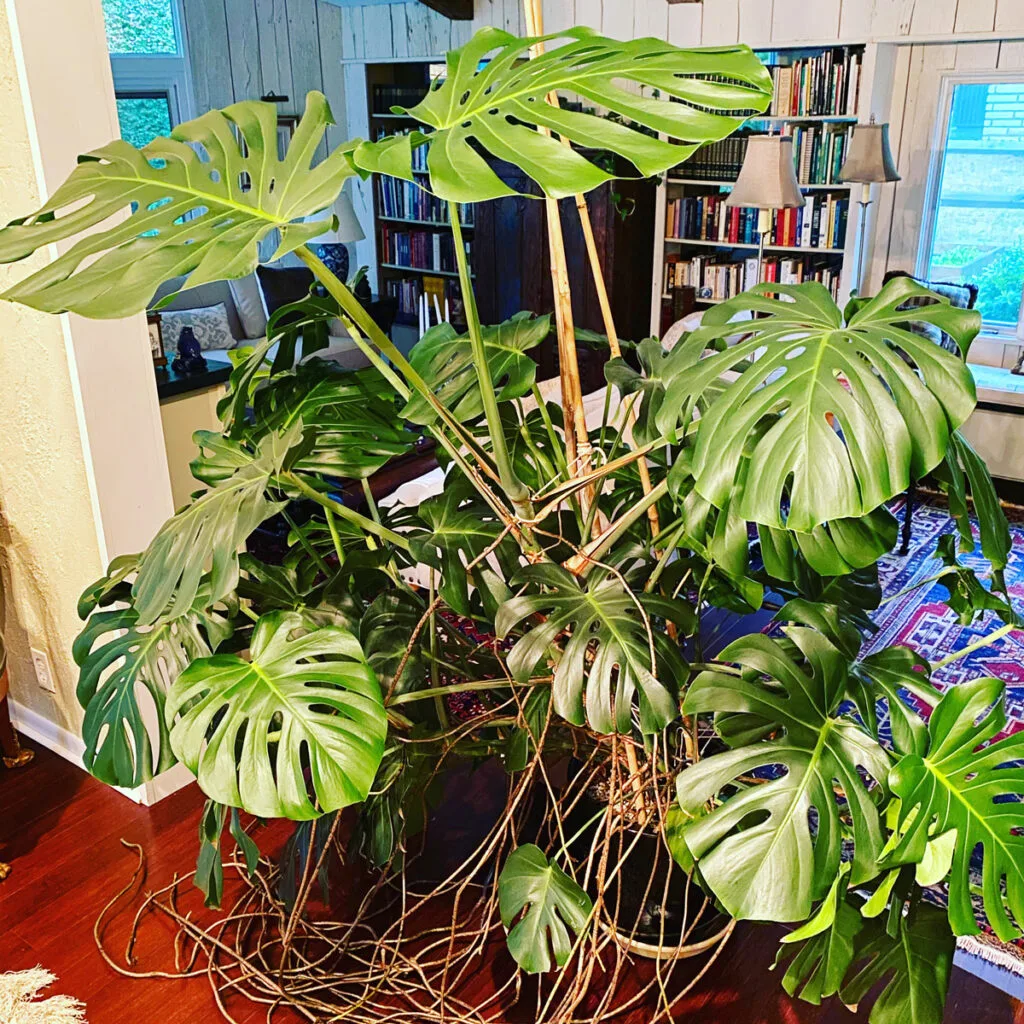
2. Monstera deliciosa var. borsigiana albo-variegata
This is a stunning variegated form of Monstera deliciosa with beautiful streaks and patches of white. The appearance is not the only stunning feature. These also command exorbitant prices because of the demand so be prepared to pay up!
And don’t miss my variegated Monstera blog post for tips on how to keep these plants beautiful. Variegated plants are a little bit more work than non-variegated, so there are some important tips to keep in mind.
You may also be wondering what the difference is between deliciosa and borsigiana? Be sure to read the definitive answer in my post: Monstera deliciosa vs. borsigiana: Here is the Real Truth.
3. Monstera deliciosa ‘Thai Constellation’
Another variegated Monstera deliciosa, ‘Thai Constellation’ (grown by Costa Farms) has beautiful creamy yellow variegation, and like the albo-variegata, commands high prices and is very much in demand. It is much less common than the albo variegata and the leaves can get massive.
4. Monstera adansonii
Sometimes labeled as Monstera friedrichsthalii, Monstera adansonii is the accepted species. Commonly called Swiss Cheese Vine, this plant is an extremely vigorous grower and you will have an endless supply of cuttings. Adansonii is native to Mexico, Central and South America.
This plant can be displayed as a hanging basket, or given a support such as a moss pole or other types of supporting structure to climb on and attach too.
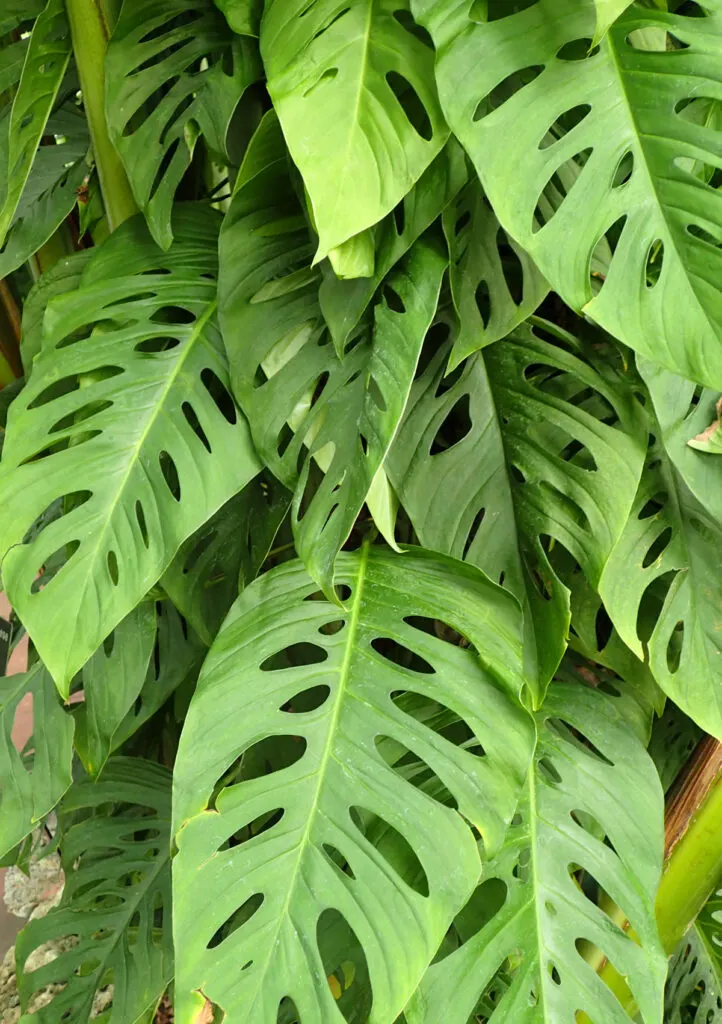
Be sure to check out my Monstera adansonii care post for more information on growing this plant.
5. Monstera adansonii variegata
This is one of those “unicorn” plants and is pretty uncommon and in demand. And you know what that means…this one also commands extremely high prices, if you can find it that is.
6. Monstera obliqua
This is probably THE unicorn plant in the houseplant world. You’ll need to be careful because this plant is indeed extremely rare, and often times Monstera adansonii is often labelled as Monstera obliqua. Obliqua is native to Trinidad, as well as Central America and tropical South America.
So don’t be fooled into thinking that you’re buying an obliqua when in fact, most of the time, it is 99.99999% an adansonii. If you really want obliqua, it will cost you an arm and a leg and really should only be left to expert plant growers. Expect to pay into the thousands of dollars for this plant.
Enid Offolter of NSE Tropicals is a very reputable grower of aroids and sometimes has Monstera obliqua in stock, in addition to a fabulous array of harder to find aroids.
Since adansonii and obliqua can look very similar, I’ve done some research with experts in the field and wrote a blog post which highlights 7 differences between obliqua and adansonii.
7. Monstera siltepecana
This beautiful species is native to southern Mexico and Central America. I’ve found that it is a rapidly growing vining plant, equally suited to hanging baskets, or as a floor plant with a climbing support.
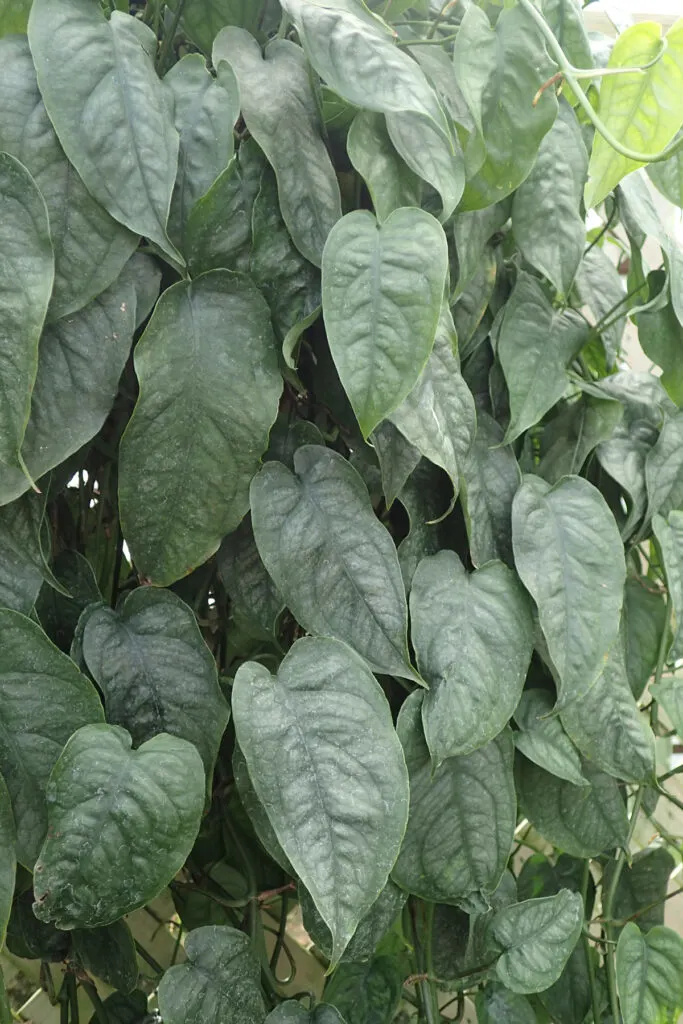
Monstera siltepecana is a fun, easy to grow plant in the home.
8. Monstera standleyana
Native to Central America and Colombia, this is a delightful species to grow. This is the non-variegated form, and there is also a variegated variety. It can be grown either as a hanging basket or even on a totem.
9. Monstera standleyana ‘Albo Variegata’
This is a gorgeous variegated variety, and no two leaves are alike!
10. Monstera sp. Peru
Sometimes called Monstera karstenianum (which doesn’t appear to be an accepted species name), is a fast growing plant with gorgeous, rigid and quilted leaves.
11. Monstera dubia
Monstera dubia, which hails from Mexico through Central and South America, has a different growing habit that most Monsteras. This is a shingling plant that climbs trees with its leaves flat against the surface of the tree trunk.
The earliest adult leaves are whole, and as the plant gets older they get more “divided” with slits and will also develop holes. The leaves are almost unrecognizable when comparing juvenile leaves vs. adult leaves. The photo below shows juvenile leaves.
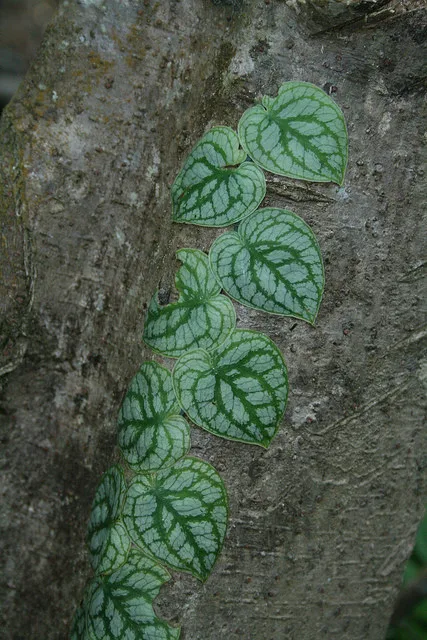
And here is what an adult plant looks like. The transformation is remarkable!
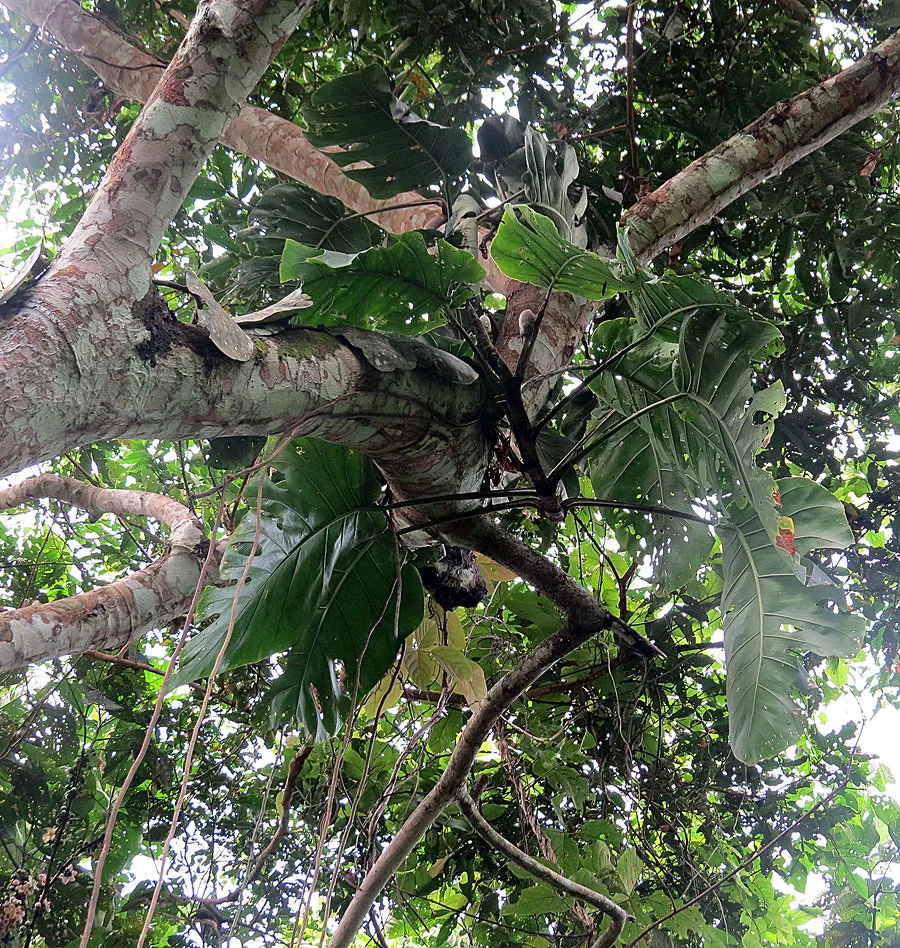
12. Monstera pinnatipartita
The native range for this plant is Central and tropical South America. This stunning, climbing aroid starts out with whole leaves when small, but develops deeply divided leaves as the plant matures. This plant is best grown with a support.
13. Monstera acuminata
Monstera acuminata is native to Mexico and Central America, and is a hemiepiphytic climber. The plant looks very similar to Monstera adansonii, but comparing the two, the leaves of acuminata are smaller (keep in mind though that the size of leaves also depends on age.)
14. Monstera subpinnata
Monstera subpinnata is native to Colombia to Bolivia. It’s foliage is very unique compared to other Monstera species and almost looks palm-like. This is a climbing species with highly pinnate leaves, and stays a much more manageable size compared to many Monsteras.
15. Monstera acacoyaguensis
The native range of this plant is Meixco to Belize. This species looks similar to adansonii and the leaves become pretty fenestrated and huge as the plant matures.
If you’re looking for an amazing potting mix that you can use straight out of the bag for your Monstera, check out the Tropical Climber Soil Blend from Oh Happy Plants. This is an amazing mix and you will get 10% off at checkout automatically if you use my link.
That wraps up this list! Of course there are many more Monstera species, but this represents a nice selection. What are your favorite Monstera varieties? Comment below! I’d love to hear.

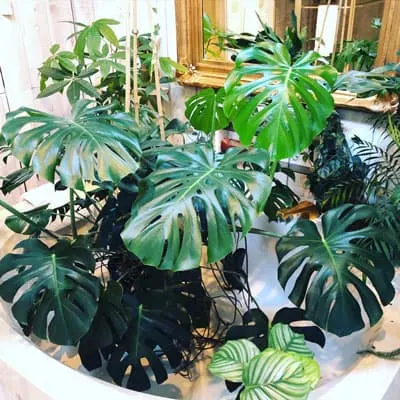
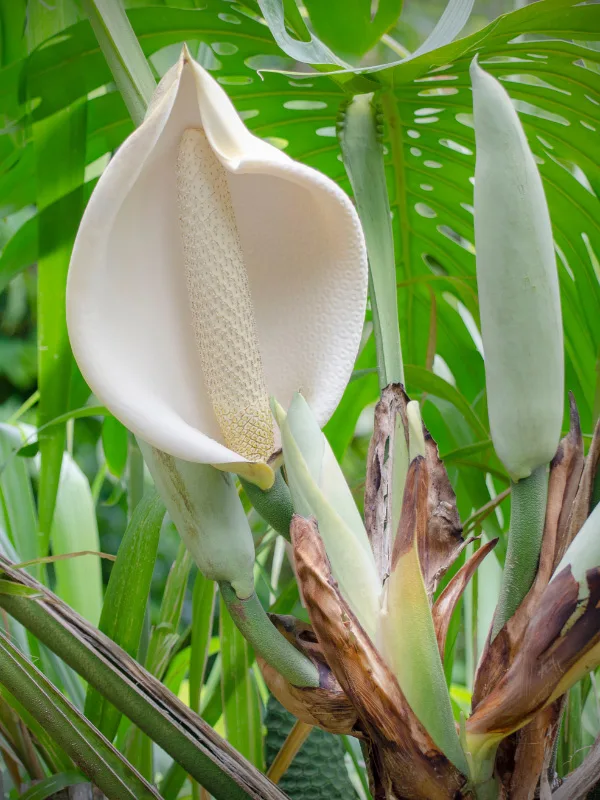
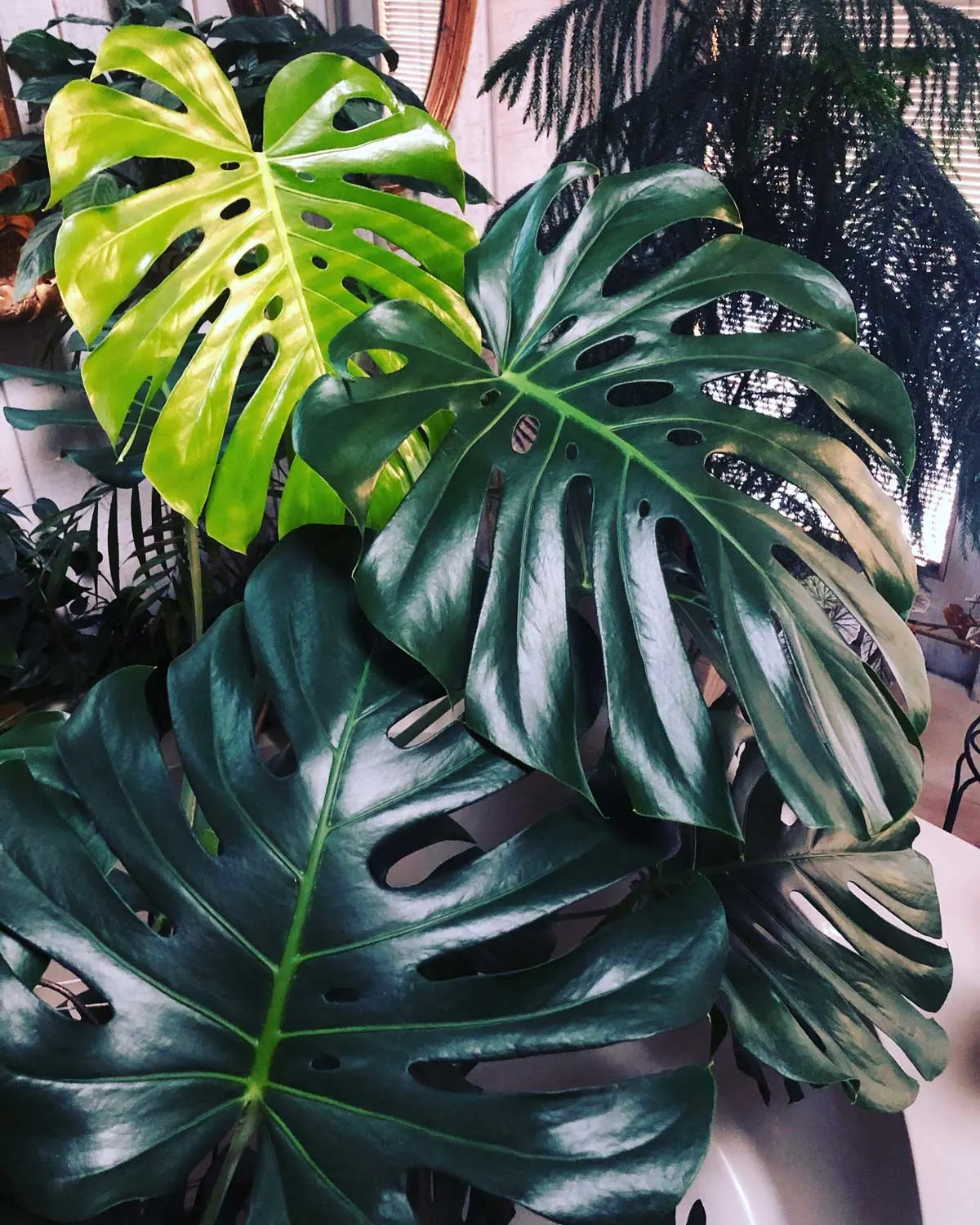
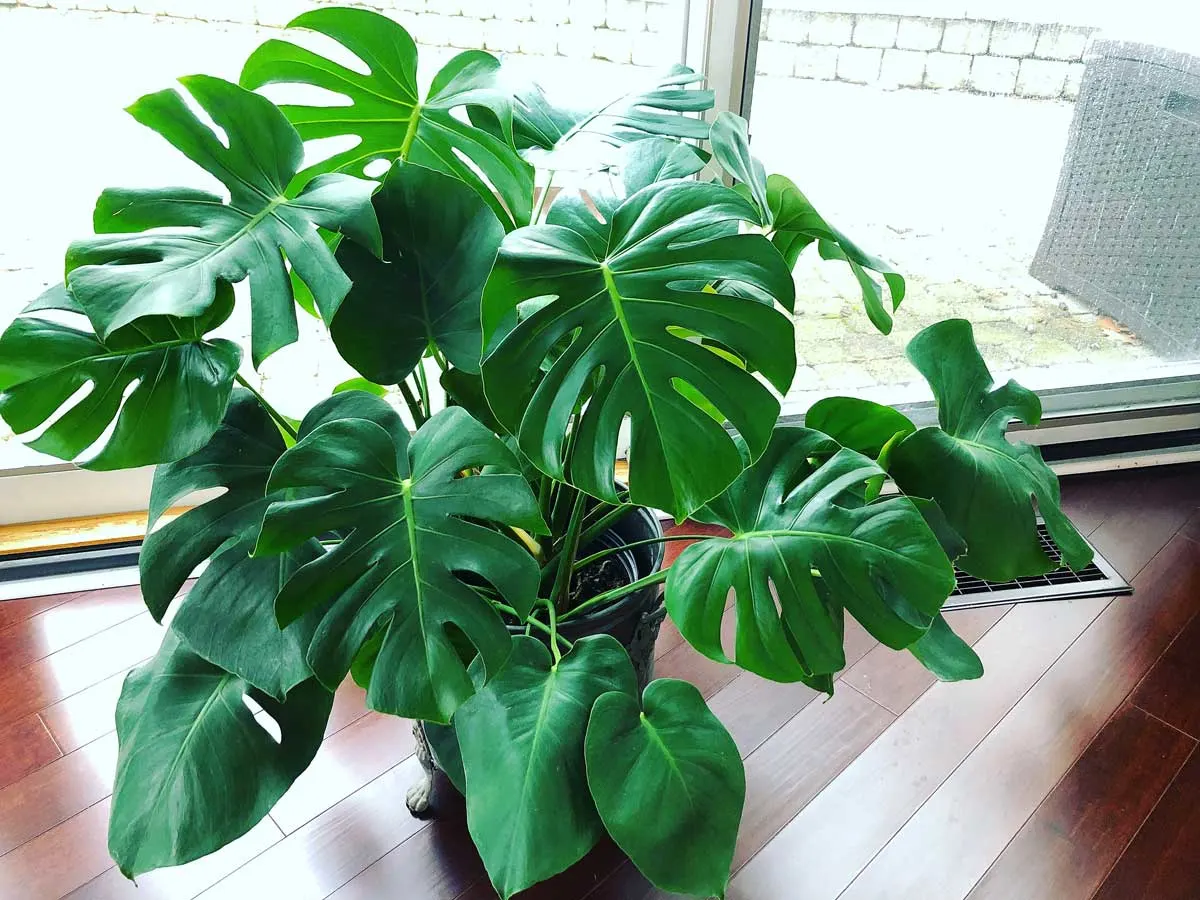
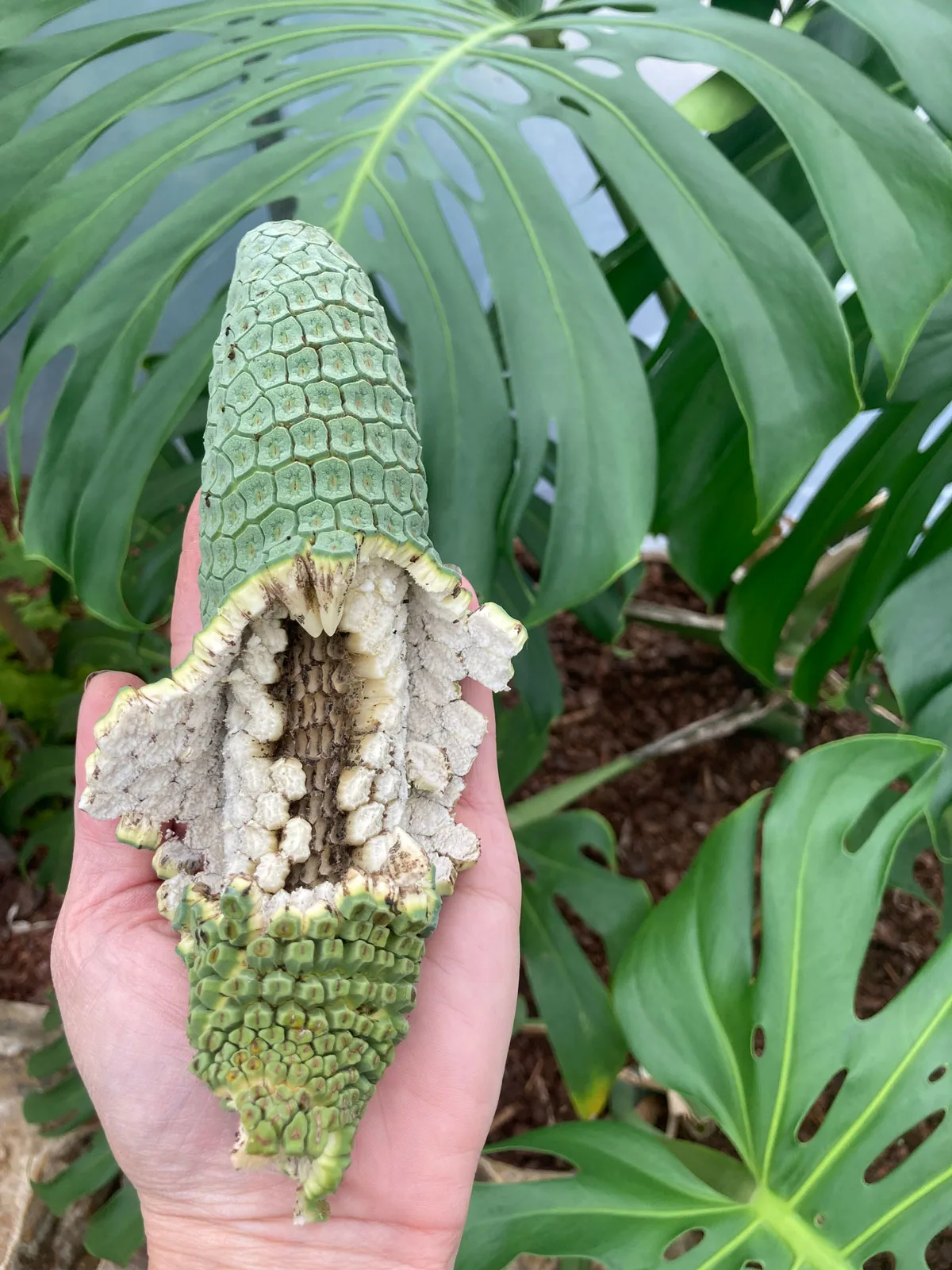
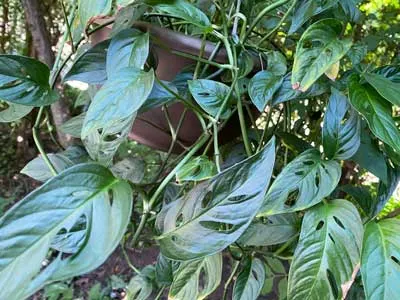
Frank
Monday 25th of September 2023
I have a monstera adansonii grown from cuttings that I bought about a year and a half ago. It became bigger than I could have it so I gave several cuttings to a local school so the children could have something that they are growing in their classroom. With the rest of my plant I cut it way down and added some more cuttings to it and it's now starting to grow up my trellis again I am waiting for it to be as nice as it was before. I had repotted it at least three times during its journey to where it is now.
Raffaele
Monday 25th of September 2023
It's amazing how fast they grow! And what a great project for school kids!
AROIDPLANT
Thursday 24th of November 2022
thank you for the information, very helpful.
Raffaele
Friday 25th of November 2022
You're very welcome!
Julia McClatchy
Monday 24th of May 2021
I have one here that doesn't exactly match any of these and I'm stumped. I thought it was deliciosa but the leaves are more split and all come out of a single trunk. It is full of fruit. 6 feet high and wide or more in zone 9....
Raffaele
Monday 24th of May 2021
I'd love to see a photo of that :-).
Angela Chia
Sunday 9th of May 2021
Thank you for sharing Raffaele. Very informative and you are very knowledgeable. I enjoy reading it. Is your book published yet?
Raffaele
Sunday 9th of May 2021
Hi Angela! Glad you enjoyed the post! My book will be out in March 2022, but will probably be available for preorder earlier. I will make sure to communicate this through my blog newsletter as well as on Instagram. I wish it was coming out sooner, but it's in process right now at the publisher.
Joy
Saturday 8th of May 2021
I never even realized there were so many monstera varieties! Thank you for sharing!
Raffaele
Saturday 8th of May 2021
You're very welcome Joy! There are even more than in the post, but not all are readily available. Some of the ones in my post are hard to find too, but it gives you an idea. :-)